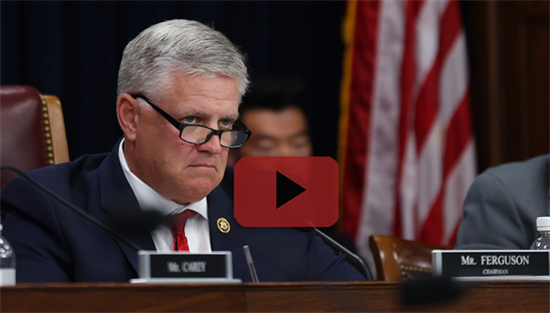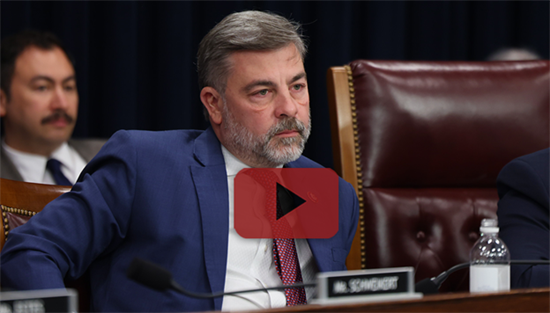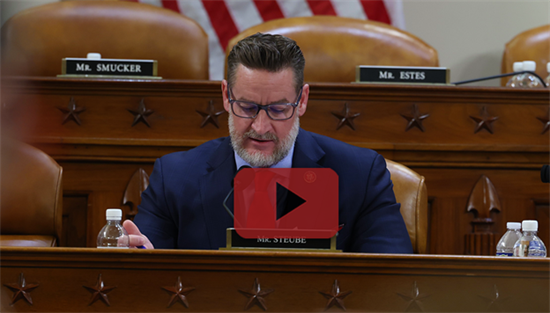Three Key Moments – Hearing on the Windfall Elimination Provision (WEP) and Government Pension Offset (GPO)
Washington, D.C. – The Ways and Means Social Security Subcommittee heard testimony from Social Security experts about how the Windfall Elimination Provision (WEP) and Government Pension Offset (GPO) unfairly harm many public servants while allowing others to receive overly generous benefits. Witnesses identified how the outdated formulas used to calculate the WEP and GPO create unfair outcomes for beneficiaries affected by one or both policies. As Congress examines solutions and reforms to address the issue, witnesses warned against overcorrecting: treating the 4 percent of beneficiaries better than the other 96 percent of Social Security beneficiaries unaffected by this problem.
Background:
The WEP and GPO, enacted into law in 1983, primarily affect state and local government employees, like teachers, police officers, and firefighters, who receive a pension based on earnings that are exempt from Social Security payroll taxes. The WEP, operates by reducing the benefits of certain beneficiaries who are entitled to both Social Security benefits and pension benefits from employment not covered by Social Security. The GPO was intended to replicate Social Security’s dual entitlement rule for benefits earned from contributions made to a Social Security substitute plan.
Social Security Has the Data to Improve the WEP and GPO for Retirees
The WEP and GPO are both based on outdated and complicated formulas that act like a blunt instrument in adjusting Social Security benefits for retirees with non-covered employment. As Congress examines potential solutions, Social Security Subcommittee Chairman Drew Ferguson (GA-03) noted that the Social Security Administration now has data required for fairer solutions. These solutions also have the potential to reduce improper payments by the Social Security Administration, which totaled $16 billion over the last five years.

Rep. Ferguson: “As we’ve heard, the alternatives to WEP and GPO have been considered in the past, but some of these solutions relied on data that the Social Security Administration just didn’t have. As a former Deputy Commissioner of SSA, does SSA have the data now that it needs to implement a better version of WEP and GPO?”
Dr. Jason Fichtner, former Deputy Social Security Commissioner: “The answer in part is yes. We now have at least 35 years of history for everyone’s earnings data, so they can do a better job if we implemented a proportional formula…“
Social Security Currently Facing Fiscal Challenges
According to both the Social Security Trustees and the Congressional Budget Office, the Social Security Trust Fund will become insolvent in less than 10 years, forcing automatic cuts of Social Security benefits for every beneficiary. In response to Rep. Mike Carey (OH-15), a Social Security expert pushed back on the false Democrat narrative that “income inequality” is the primary cause of Social Security’s deteriorating finances.

Rep. Carey: “Is income inequality – cut through all the hyperbole here – is it the biggest reason Social Security is facing the financial shortfall that it is within the 10 years?”
Dr. Charles Blahous, Social Security expert: “No, it’s not the biggest reason there’s a shortfall…The overall problem is caused by demographics, increasing longevity, declining fertility, and also there was a series of automatic benefit increases that were enacted in 1970s that were more rapid than could be funded over time within a stable tax rate. Those things were known in 1983. So, if you look at the 1983 projections, you could see that they were unsustainable even then.”
Solutions Impacting Four Percent of Beneficiaries Will Affect 100 Percent of Beneficiaries
The WEP and GPO are unfair policies that penalize Americans who had jobs that were exempt from Social Security, primarily local and state government employees. Both provisions are now over 40 years old, and the SSA has better data to more accurately address and tailor benefits as compared to its 1983 creations. As Congress examines potential solutions that will end the unfairness, Rep. Greg Steube (FL-17) highlighted any change to the benefits of the four percent of beneficiaries affected by either the WEP or GPO will eventually affect the benefits of all 65 million Social Security beneficiaries requiring Congress to carefully tailor the solution it pursues.

Rep. Steube:“We recognize that all beneficiaries deserve fair treatment. The Windfall Elimination Provision and the Government Pension Offset were put in place over forty years ago with the intention to prevent preferential treatment for workers with employment exempt from Social Security. This policy impacts about 4 percent of Social Security beneficiaries, but any changes made by Congress to the Social Security Trust Fund affects 100 percent of Social Security beneficiaries. Neither the WEP nor the GPO adjust benefits based on a worker’s actual earnings, and as a result frequently over- and under-correct for the problem they were intended to address. When the WEP and GPO were put in place in 1983, the Social Security Administration lacked robust non-covered earnings data. SSA has since collected decade’s worth of non-covered earning data it can now use to better tailor benefits. Rather than using an outdated system, Social Security Administration now has advanced technology and a lot of data to properly measure earnings.”
